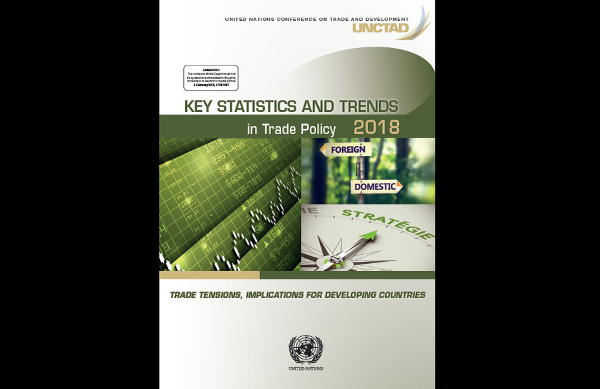The trade dispute between China and the United States will be favorable to some countries not directly affected by their tariff wars, including Southeast Asian nations, according to a new study by the United Nations Conference on Trade and Development (UNCTAD).
The UNCTAD in its Key Statistics and Trends in Trade Policy 2018: Trade Tensions, Implications for Developing Countries underlines that bilateral tariffs would do little to help protect domestic firms in the U.S.’s and China’s respective markets, even as it predicts benefits for other countries.
It estimates that of the US$250 billion in Chinese exports subject to U.S. tariffs, about 82% will be captured by firms in other countries, about 12% will be retained by Chinese firms, and only about 6% captured by U.S. firms.
Similarly, of about $110 billion in U.S. exports subject to China’s tariffs, about 85% will be captured by firms in other countries, U.S. firms will retain less than 10%, while Chinese firms will capture only about 5%.
The results are consistent across different sectors, from machinery to wood products, and furniture, communication equipment, chemicals to precision instruments, the report said.
“The reason is simple: bilateral tariffs alter global competitiveness to the advantage of firms operating in countries not directly affected by them. This will be reflected in import and export patterns around the globe,” the report said.
Countries expected to benefit the most from U.S-China tensions are those which are more competitive and have the economic capacity to replace U.S. and Chinese firms.
European Union exports are those seen likely to increase the most, capturing about $70 billion of U.S.-China bilateral trade ($50 billion of Chinese exports to the U.S. and $20 billion of U.S. exports to China). Japan, Mexico and Canada will each capture more than $20 billion.
Although these figures do not represent a large slice of global trade—which was worth about $17 trillion in 2017—for many countries they make up a substantial share of exports. For example, some $27 billion of U.S.-China trade that would be captured by Mexico represents a non-negligible share of Mexico’s total exports (about 6%).
Substantial effects relative to the size of their exports are also expected for Australia, Brazil, India, Pakistan, and the ASEAN’s Philippines and Vietnam. Others also seen to gain from the windfall include South Korea, Taiwan, and other ASEAN nations like Singapore, Thailand, Indonesia, and Malaysia.
But despite a surge in the exports of some countries, negative global effects are likely to dominate, said the report. Common concerns include the unavoidable impact that trade disputes will have on the still fragile global economy, having more countries join the fray, and protectionist policies possibly escalating to a global level.
Finally, in an interconnected global economy, the tit for tat moves of the trade giants are likely to have a domino effect beyond the countries and sectors targeted. For example, the high volume of Chinese exports affected by U.S. tariffs is likely to hit East Asian value chains the hardest, with UNCTAD estimating that they could contract by about $160 billion.
The ongoing trade tensions initially came to a head in early 2018 when China and the U.S. imposed tariffs on about $50 billion of each other’s goods. The confrontation quickly escalated, and in September 2018 the U.S. imposed 10% tariffs covering about $200 billion of Chinese imports, to which China retaliated by imposing tariffs on imports from the U.S. worth an additional $60 billion. The 10% tariffs were initially due to rise to 25% in January 2019. However, in early December 2018 the parties agreed to freeze the tariff increase until March 1, 2019.









